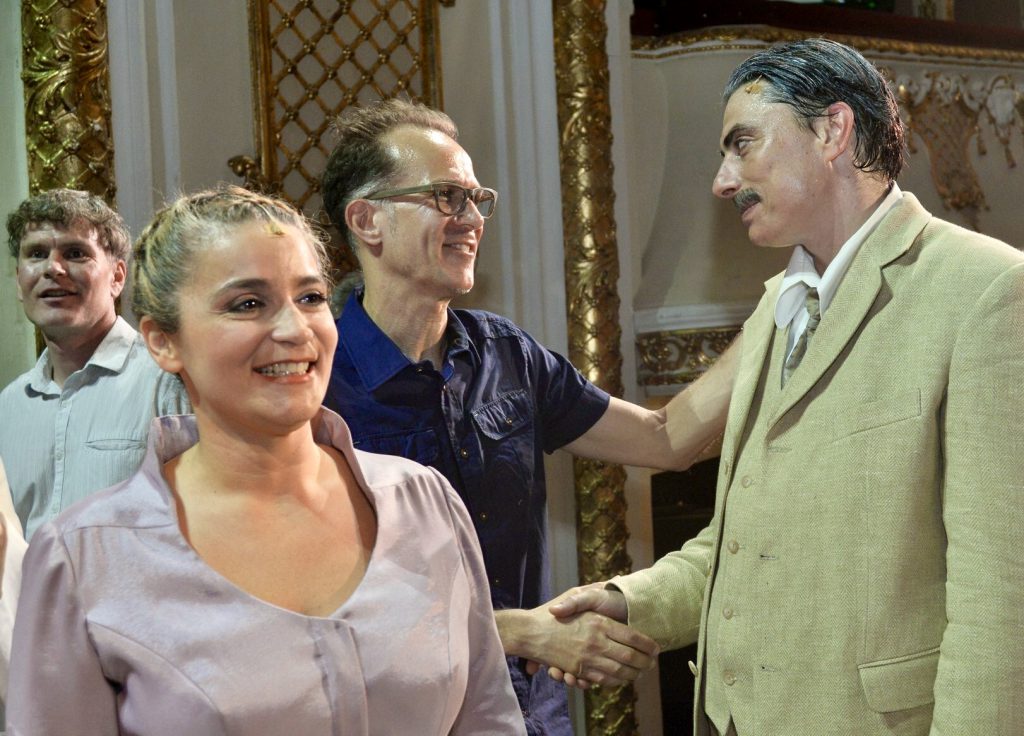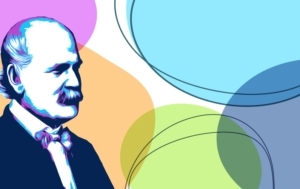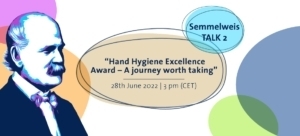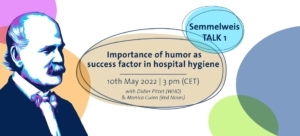With the dire problems that face our species, we need our outsiders and their fresh ideas”, says the composer from the new opera-theater work “Semmelweis”, Raymond Lustig. On Saturday (June, 9) he had the premiere in Hungary with his beautiful and touching piece at Miskolc National Theatre. What is Raymonds passion for the Semmelweis story? Carola Timmel asked the composer …
Raymond, what was your motivation to write an opera about Semmelweis/ resp. the Semmelweis story?
I did not learn of Ignaz Semmelweis until I was in my early 30s, and was amazed that this story is not more well known. How was it that the reality Semmelweis uncovered—so obvious to us now, and its solution so simple—could have been so strange as to be offensive, revolutionary, and been met with fierce opposition? At the time I was, and continue to be, very concerned about our climate crisis. Like childbed fever, the response to the climate crisis is one of those issues that is very polarized. I thought of those 19th-century physicians who ended up on the wrong side of the highly controversial question of the importance of clinical hygiene. And I thought of those in the past who argued that the world is flat, and all of those people who end up on the wrong side of our collective human understanding. And I actually have sympathy for them. At the time the idea is brand new, no one knows where things will go yet; there has been many a discredited new idea, justifiably rejected and long forgotten about. For those on the wrong side, their legacy left is sadly one of ignorance. It is very interesting to me this polarization of our response. We, as a society, as a species, seem to have such a strong tendency to polarize in our response to new ideas, rather than to remain both open and at the same time critical. We enthusiastically accept or we enthusiastically reject, and we quickly tribalize against those on the other side. It’s very hard for us to remain toward the middle, holding our opinion but still open to criticism of it. Our emotions, that powerfully human trait, seem always to drive is into tribes. Our new ideas will polarize us, and someone has to be on either side. How sad for those who end up on the wrong side, for they are often very well-intentioned and dedicated people, as a great many of the doctors were in the Semmelweis story.
In the case of Semmelweis, denial was an extremely powerful factor, for how could doctors—brilliant, passionate, empathic, tirelessly self-sacrificing, healers—be expected to feel about the idea that their hard work had actually been taking lives, the lives of mothers. A truth too awful to believe. Our capacity for denial almost commands us to reject that idea, as if in so doing we could force it to be false. Why was Semmelweis not also restrained by denial?
So I thought about the origins of new ideas, and what a strange place to be, like Semmelweis, before denial sets in, before polarization, at the origin of an idea that was destined to bitterly divide his world. As an artist, I wonder about the experience of that, the intangible, un-researchable experience, especially in Ignaz Semmelweis’s case, where the urgency and immediacy were so terribly high, as mothers continue to die in huge numbers. This haunted me. And I needed to explore it.
How did you prepare for this work?
First I got in contact with my writer/poet friend Matthew Doherty, whose work I have always admired tremendously, and with whom I had collaborated before. He and I read many biographies, books about the time, spoke with physicians we knew, including Dr. Warren Widmann who has lent much support to the project, and my own wife, surgeon Ana Berlin, M.D. I even had the chance to speak with the late physician-turned-Semmelweis-biographer Dr. Sherwin Nuland. Doherty and I began writing together. Though we lived on opposite sides of the world, he sent me poems he was writing, and I sent him music that was coming to me. My wife Ana also helped tremendously, with critical, logistical, and even creative contributions. The wonderful Brooklyn-based organization American Opera Projects sponsored several early workshops where we experimented with the artistic problems of trying to reflect this intricate story in the media of music and theater. We worked a great deal with director and playwright Matt Gray on two of these workshops. We learned much from these early versions, and realized that the story of Semmelweis is as much a story of women as it is of this man and his man’s world of physicians, and we wanted a way to make this work not male or female but more broadly human. Semmelweis and the women were in many ways one and the same, their fates were intricately tied, as all of our fates are. It was seeing a very powerful performance by the incredible Slovenian women’s choir Carmina Slovenica that showed me how overwhelming powerful a women’s choir can be. And that was what was needed, the presence of many women, not an anonymous masse but an overwhelming collective of individual women who completely saturate Semmelweis’s experience. Our work therefore takes place within the mind of Ignaz Semmelweis, as if in his dying moments, as the breadth of his experiences, bad and good, are coming together. He fears his insight will die with with him and he is haunted by the women he cannot save. He is becoming one with all those mothers. He also cannot be saved.
In one of the songs an Hungarian lullaby is integrated. This is touching to read. Which lullaby is it?
It’s a beautiful Hungarian lullaby called “Mária Altatója” that I heard and it haunted me. Lullabies are very important in Hungarian culture, and a powerful symbol of motherhood. I wondered what lullabies were sung to little Ignaz Semmelweis who would become the “savior of mothers,”, which lullabies he may have heard sung by the mothers on his wards, and which ones he sang to his own children. The final line of “Mária Altatója” is “Fall asleep God’s lamb. You came into this world in love.” It made me think of dying mothers, their children, and of the dying Ignaz Semmelweis, but this idea of “you came into this world in love” caught me particularly. The unconditional love of motherhood, of parenthood, is this one form of pure openness, where there is no need to polarize. Innocence and openness. Semmelweis somehow held onto something of this childlike open mind, a remaining thread of being a baby in his mother’s arms. It cost him dearly on a personal level, but it saved countless lives, and changed history.
The Concert Première of the Opera was on September 11th last year – a random date?
My parents’ anniversary! Where my own story began. But it was actually coincidental, the day that was available at The National Arts Club, the beautiful venue in New York that graciously invited us to perform. But of course it’s also a very somber day for Americans and for many around the world because of the tragic terroristic acts in the U.S. The Hungarian Consul General to New York Ferenc Kumin attended our concert premiere and spoke beforehand very movingly about the connection, about opening our hearts and our minds, about bravery and self-sacrificing acts of goodness that eventually triumph over ignorance. In our hopelessly-hardwired human tendency to see the world as “us” and “them,” the arts help us widen that circle of who we are able to accept into the “us” camp, and therefore make our world more stable, peaceful and filled with the richness of human experience rather than its ugly traits. We must remember that Semmelweis was an outsider, a foreign doctor working in Vienna’s elite hospital. Perhaps it was his outsiders perspective that allowed for his insight. With the dire problems that face our species, we need our outsiders and their fresh ideas. We need to try to welcome as many of our fellow humans into our “us” camp, for our very survival.
The women’s chant is really moving, and hearing your music I ask myself: Despite the most ambitious hand hygiene campaigns in hospitals all over the world hand hygiene compliance of health care workers often is less than 50 percent. Do you think that an aesthetic approach like yours to this issue could be more effective in the fight against nosocomial infections (to be “touched” by music etc…)?
Well, I can’t say I know. I hope so. The arts affect us in deep and hidden ways. They can be a maddeningly imprecise axe to wield for specific issues, and while I would love to think that piping music into hospitals might be of help, it’s not often that a specific artwork can be effectively put to use to solve a concrete problem. I like to think that our arts in general make us wiser and more empathic, and from there can the spring the goodness, insights, and courage that solve problems in our world. Many hospitals have recognized the intangible benefits of the arts within the environment of their work. Methodist hospital in Houston, Texas is one I know of that has an extremely active music program.
Photo:
Following the premiere of SEMMELWEIS at the Bartok Plusz Opera Festival in Miskolc, Hungary. Pictured from left to right:
Matthew Doherty (librettist) Veronika Nádasi (Maria Semmelweis), Raymond J. Lustig (composer), Szilveszter P. Szabó (Dr. Ignác Semmelweis)
Photo credit: Bartok Plusz Opera Festival




